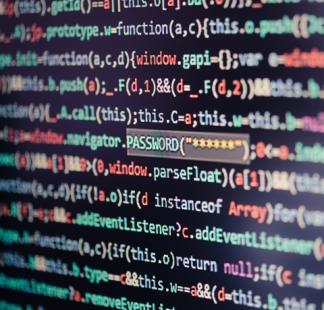- Garam Bel
- Rosie McDonald
Introductory
Event Organizer(s)

Description
Reliable, secure data-hosting solutions are becoming increasingly important to support everyday functions across societies. Although data infrastructure such as data centers and cloud solutions are essential for storing and processing data, they are highly energy intensive and consume refrigerants and often large amounts of water for cooling. As such, they leave a large environmental footprint and contribute to greenhouse gas (GHG) emissions. Climate change also affects data centers. Climate hazards such as floods and increasing temperatures put data centers at risk and require climate-resiliency measures to protect investments and ensure resilient data storage. The aim of this e-learning is to inspire and inform practitioners on how to green data storage investments and create an enabling environment conducive to green data infrastructure.
A wide range of practitioners is involved in decisions related to green data centers, ranging from policy makers developing digital economy strategies to engineers and technicians working every day on the floor of data centers. This e-learning takes the vantage point of public practitioners, but the principles apply to any stakeholder engaged in developing, operating, or procuring data center infrastructure.
Upon completion of this course, participants will be able to:
- Recognise key concepts and principles for Green Data Centers.
- Recognise the opportunities and benefits of Green Data Centers and its climate resilience.
- Apply climate change mitigation strategies for data centers.
- Summarize the approach for Greening Public Procurement of Data Centers
- Create an enabling environment for greening data centers.
- Recognize the nuances of the Low- and Middle-income Countries (LMIC) context.
The training objectives will be reached upon the completion of the e-learning, its interactive modules, and its quizzes. No extra work will be required of participants.
There will be 10 quizzes in total. A total score higher than 80% is required to obtain the ITU badge.
Module 1: Introduction
Participants will get introduced to the e-learning and understand how to navigate and use the e-learning.
Module 2: Fundamentals
Participants will explore the key concepts of green data centers.
Module 3: Greening Data Centers – Climate Resilience
Participants explore strategies for enhancing the climate resilience of data centers, highlights the importance of climate resilience, outlines climate risks and hazards to data centers, and presents steps for increasing data center resilience to climate change.
Module 4: Sustainable design and building
Participants explore the first dimension of data center sustainable infrastructure. The data center’s location and design affect environmental risks, operational reliability, resource use, and energy efficiency. Most sustainable management of data centers focuses on the operational stage and overlooks green design and construction aspects.
Module 5: Sustainable and Circular ICT Equipment
Participants explore the second dimension of data center sustainable infrastructure. ICT equipment in data centers is resource and energy intensive to manufacture and requires power and cooling to operate. It is vital to address at sustainable and circular ICT equipment.
Module 6: Sustainable Energy
Participants explore the third dimension: energy consumption. Data centers are energy intensive, consuming 10 to 100 times as much electricity per floor space area as most commercial buildings. Data center operators thus need to prioritize low energy consumption in their strategies.
Module 7: Sustainable Cooling
Participants explore the fourth dimension of data center sustainable infrastructure. Efficient cooling is crucial for high-performance computing and server technologies, which generate substantial heat. The data center temperature must be maintained within a certain range to prevent condensation and damage to IT equipment, which causes downtime and data loss.[i]Cooling data center IT equipment can account for more than 40 percent of total energy consumption in large data centers and even more in smaller ones.
Module 8: E-waste Management
Participants explore the fifth dimension of sustainable data center infrastructure. When planning for a data center, it is crucial to consider equipment lifespan, typically 1 to 5 years for servers but up to 10 years with secondary use.Integrating strategies into the data center lifecycle is essential to meet sustainability objectives.
Module 9: Greening Public Procurement of Data Centers
Participants learn about green public procurement of data centers. Green public procurement (GPP) is an approach to enhancing environmental sustainability of procurement, including for data centers and server infrastructure. Introducing GPP in procurement of data infrastructure can also support the broader data center market’s green transition.
Module 10: Greening the Enabling Environment for Data Centers
Participants explore the strategies to establish an enabling environment for sustainable data centers. As the data center sector globally strives for sustainability, governments can influence this transformation through various instruments, including laws, incentives, and services that can guide the data center sector toward greener outcomes.











